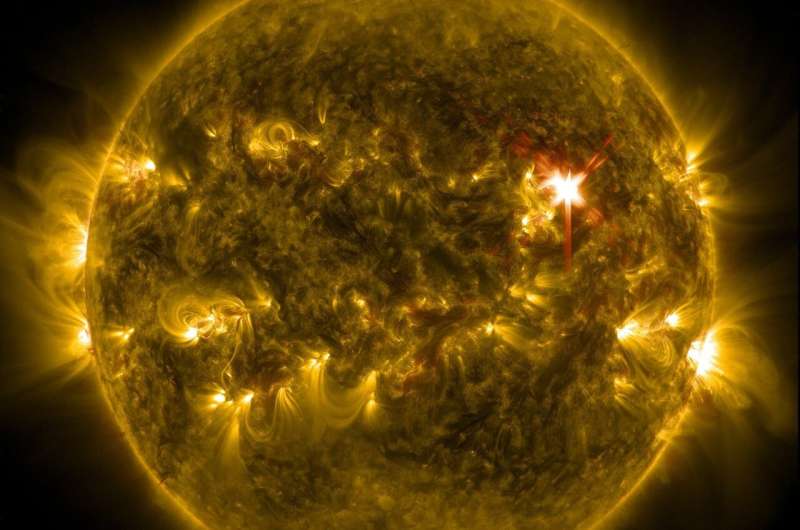Researchers identify role of turbulence for plasmas heating in solar flares

On July 2, The Astrophysical Journal published a numerical study on a solar flare current sheet (CS). Dr. Ye Jing from Yunnan Observatories of the Chinese Academy of Sciences and his collaborators in this study investigated the turbulent radiation features found in the extreme ultraviolet (EUV) observations.
In the process of a solar eruption, a long current sheet develops connecting to the flare arcade, where vast amounts of energy are released via magnetic reconnection. Magnetohydrodynamic turbulence, such as plasmoids, chaotic structures in supra-arcade fans (SAFs), allows for the energy cascading from large scales to small scales, and eventually the fast dissipation. However, the mechanisms with respect to turbulence for the heating of plasmas in specific regions are far from being fully understood.
Using 2.5D high-resolution magnetohydrodynamical (MHD) simulations and original numerical methods, the researchers observed the formation of multiple termination shocks as well as plasmoid collisions, which make the region above the loop-top more turbulent and heat plasmas to the higher temperature. When the CS develops long enough, the turbulence becomes simultaneously anisotropic and isotropic at different locations.
In synthetic images from the Solar Dynamics Observatory/Atmospheric Imaging Assembly (SDO/AIA), the local turbulent structures are responsible for the intermittent radiation enhancements in multiple wavelengths. In particular, the Fourier spectrum studies for AIA 131, 193 A channels are strongly in agreement with the X-8.2 class solar flare on Sep. 10, 2017, which suggest the fragmented and turbulent reconnection proceeding efficiently in the CS.
Additionally, the researchers found that the heating for plasmas via turbulence is an important contributor to the source of quasiperiodic pulsations (QPPs) in the SAF, which enriches the interpretation for the QPPs.
This study helps to better understand the potential mechanisms responsible for the complex thermal structures observed in solar flares. The predicted light curves in the SAF are expected to be confirmed in the future observations.
More information: Jing Ye et al. The Role of Turbulence for Heating Plasmas in Eruptive Solar Flares, The Astrophysical Journal (2020). DOI: 10.3847/1538-4357/ab93b5
Journal information: Astrophysical Journal
Provided by Chinese Academy of Sciences




















